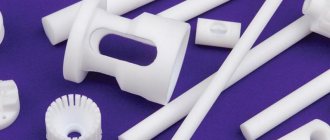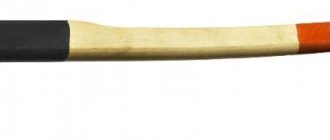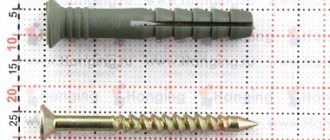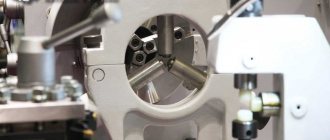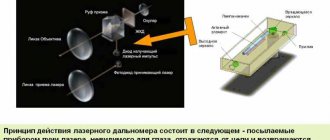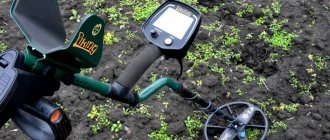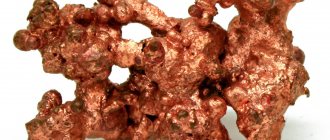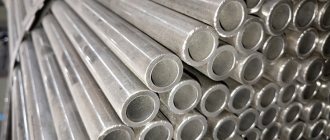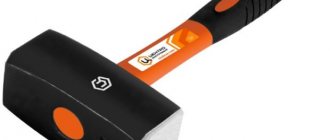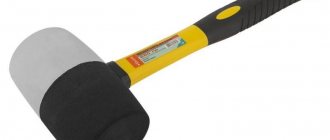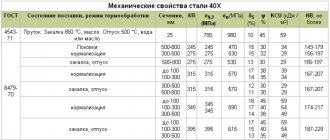How does a self-tapping screw differ from a screw?
Let's start with definitions. A screw is a fastening element with an external thread applied to a rod. When joining parts, the external thread of the screw is aligned with the internal thread of the hole in the part or parts. So you need to pre-drill a hole to install the screw. A screw differs from a screw in that it has a smooth narrowing at the end and sparser thread turns.
What is the difference between a self-tapping screw and a screw: thread and material
Now pay attention. Self-tapping screw is short for self-tapping screw. It differs in that it does not require a pre-drilled hole for installation. When screwed in, it cuts the required grooves itself. Hence the term - self-tapping. And so that the self-tapping screw can “bite” into the material itself, its thread is triangular, with sharp edges and, as a rule, “deeper”. So, a self-tapping screw is a type of screw that itself drills a hole in the material as it is tightened.
A self-tapping screw is a screw that drills a hole for itself
If we talk about the difference between self-tapping screws and screws, then the self-tapping screw has a more elongated and sharper edge. With this shape it is easier to “bite into” the material. To install self-tapping screws, a screwdriver is usually used, which allows you to do a large amount of work, unlike using a conventional screwdriver. Overcoming the resistance of the material when cutting a hole is not easy.
COLD FORMING EQUIPMENT FOR THE PRODUCTION OF SCREWS IN A SEMI-PROTECTIVE CASING
Equipment for planting (production) of self-tapping screws and screws in a semi-protective casing is relatively easier to operate compared to models in a protective casing, and is more environmentally friendly. Currently, this equipment is the most popular choice among our customers. Semi-sheathed cold heading equipment is available in large and medium-sized machines, ideal for the production of high-quality large and microscopic screws used in machinery, automotive, photo electronics, precision electronics, mobile phones (iPhone), electrical engineering, automotive industry, etc. The mounting hardware used for this equipment can withstand shock and vibration.
Specification of equipment for the production of self-tapping screws and screws model RA-5S
| Max. workpiece diameter | 0.8-3 mm |
| Max. workpiece length | 24 mm |
| Slider stroke length | 38 mm |
| Performance | 170-200 pcs./min. |
| Main die diameter | 20 mm |
| Cutting die diameter | 13.5 mm |
| Punch 1st position | 18 mm |
| Punch 2nd position | 18 mm |
| Main engine power | 1 hp |
| Oil pump | ¼ hp |
| Machine dimensions, LxWxH | 1650x1100x1560 cm |
| Net weight | 820 kg |
| Gross weight | 880 kg |
Technical characteristics of equipment for the production of self-tapping screws and self-tapping screws
| Model | Max. workpiece diameter | Max. workpiece length | Slider stroke length | Production, pcs./min. | Main die diameter | Cutting die diameter | First punch | Second punch | Drive power | Oil pump | Machine parameters LxWxH, mm | Net weight, kg | Gross weight, kg |
| RA-5S | 0.8-3 mm | 24 mm | 38 mm | 170~200 | 20 mm | 13.5 mm | 18 mm | 18 mm | 1 hp | ¼ hp | 1650x1100x1560 | 820 | 880 |
| RA-5.5S | 2-3.5 mm | 28 mm | 46 mm | 200~250 | 25 mm | 13.5 mm | 18 mm | 18 mm | 1 hp | ¼ hp | 1750x1150x1550 | 980 | 1050 |
| RA-10S | 2-4 mm | 32 mm | 58 mm | 190~220 | 30 mm | 15 mm | 24 mm | 20 mm | 2 hp | ¼ hp | 1850x1300x1720 | 1050 | 1160 |
| RA-15S | 4-5 mm | 64 mm | 92 mm | 150~180 | 34.5 mm | 19 mm | 31 mm | 31 mm | 2 hp | ¼ hp | 2100x1100x1320 | 1750 | 1840 |
| RA-15S | 4-5 mm | 76 mm | 110 mm | 150~180 | 34.5 mm | 19 mm | 31 mm | 31 mm | 2 hp | ¼ hp | 2100x1100x1320 | 1860 | 1980 |
| RA-20S | 4-6 mm | 76 mm | 124 mm | 90~110 | 45 mm | 25 mm | 36 mm | 36 mm | 3 hp | ¼ hp | 2400x1400x1500 | 2645 | 2750 |
| RA-20S | 4-6 mm | 102 mm | 156 mm | 80~100 | 45 mm | 25 mm | 36 mm | 36 mm | 3 hp | ¼ hp | 2650x1500x1500 | 3210 | 3360 |
Types of self-tapping screws
Self-tapping screws are divided by area of application. They are universal, for wood and metal. These are three main and large groups. There are even more highly specialized ones - for concrete, drywall (GKL) and gypsum fiber sheets (GVL). There are separate groups for window profiles and roofing materials.
However, keep in mind that when they talk about metal screws, they mean sheet metal or profiles made from it. And then, in sheets of large thickness, holes are often pre-drilled. This makes it easier and faster to install fasteners, especially if they are not of good quality.
There are many types of self-tapping screws. So which ones should you choose?
Moreover, holes are often drilled in wood for self-tapping screws. In dense wood - such as oak - this is an almost immutable rule. The density of such wood is high and otherwise the process is too slow. In soft wood, holes for installing self-tapping screws are drilled for another reason - to prevent the wood from cracking. When the screws are placed almost on the edge, this is possible. So they are insured. In any case, the diameter of the hole for installing the screw should be 1-2 mm less than the diameter of the fastener. Only under this condition will it be easy to install and the strength of the connection will be normal.
There are also universal screws. But this does not mean that they are “for everything.” This means that they are optimal when it comes to joining wood and metal. And for metal-to-metal, wood-to-wood connections, it’s better to take your own narrow-profile fasteners.
For wood and metal - the difference
What is the difference between self-tapping screws for wood and metal? First of all, different thread pitches. For installation in wood, the carving is rarer. This is quite enough to gain a foothold in the fibrous structure. A self-tapping screw for metal has denser threads. Another difference is the metal used to make the fasteners.
What is the difference between self-tapping screws for wood and metal. The first thing that catches your eye is the density of the thread. The second is the diameter of the pin, the third is the height of the thread profile
Self-tapping screws for metal can also have not just a narrowing with applied threads, but additional planes - a drill. Such fasteners can drill holes in sheet metal up to 5 mm thick. To prevent the edge of the screw from sliding on the surface of the metal (and wood too), the installation point is “capped.” Using a punch and hammer, leave a small dent. It is not necessary to pierce the metal. It is enough that the self-tapping screw drops into the recess.
Metal and processing method
Self-tapping screws are made of carbon steel, stainless and brass. In the vast majority of cases, we use carbon steel self-tapping screws. They are not as expensive as stainless steel, but quite durable if chosen correctly. However, steel screws can come in different colors: white, yellow and black. They get color after processing. Black ones are obtained by oxidation and phosphating, yellow ones are obtained by anodizing, and white ones are usually galvanized. There are also yellow galvanized ones.
It is also necessary to keep in mind the method of metal processing
What color screws should I choose? It depends on what material. If for wood, the best choice is anodized. These are yellow ones. Yes, they are much more expensive than black ones. But black oxidized ones rust and then leave streaks on the wood. For metal, this is not critical, since usually the joints are painted over so that they do not rust. But there is one more point: black oxidized screws can be brittle. If you twist it during installation, the head may fly off. Not only can this happen during installation, but it also happens under load. For example, when the flooring was screwed to the joists using black oxidized self-tapping screws. Boards are known to bend and dry out. And this leads to increased loads on the fasteners. And the heads of black screws often fly off. This can be noticed when the floor is rebuilt. And also because some boards begin to bend or sway and creak more strongly. The caps broke off and the fasteners did not hold.
To install metal sheet material, it makes sense to take galvanized screws. There will be no coating conflicts or chemical reactions. In this case, they usually take white ones. Yellow is used for aesthetic reasons - when installing door hinges, locks, handles and other similar yellow fittings.
Types of self-tapping screws: head and slot
Self-tapping screws are also divided by head type. There are many types, but it is worth remembering that there are secret, semi-secret and protruding (hemispherical, semi-cylindrical, etc.). Also available with hex heads. They are used for installing roofing material, polycarbonate, fastening materials to fences, and covering frames. In general, where rigid fixation is important. Self-tapping screws with hexagonal heads are usually equipped with sealing washers and rubber gaskets.
Types of self-tapping screw heads
Self-tapping screws with countersunk heads are hidden in the wood during installation. In this case, there is no need to pre-drill holes of a larger diameter for the cap. To make the hat fit like clockwork, take countersunk heads with notches.
Types of slots on self-tapping screws. It makes sense to take those for which you have an instrument
The heads have a recess for the tool - this is the slot. We select this parameter based on the available tool or bit. You can, of course, buy them - bits - but you should think about this in advance. And then purchase fasteners and bits. If we talk about which spline is better, then Torx is currently considered the best, since it transmits torque best. This is important when working with hard material.
Assortment of fasteners for roofing work ↑
The installation of roof coverings for buildings involves the construction of two types of roofs: flat and pitched. When constructing a flat roof, fastening hardware is not used, since the materials according to the technology are glued to the concrete covering slab or fused.
Fasteners to match the color of the roof
Which screws are suitable for a wooden rafter system ↑
The pitched roof has a different design; the protective roof covering is attached to the rafter system, which is made of timber. When constructing a soft roof, the classic fastening of the carpet using special roofing nails, staples, and threaded types is common.
Roofing fasteners with press washer
Wood self-tapping screws with a press washer can only be used to secure soft roofing to laminated plywood or hardwood substrates. The fastening is highly durable, but requires a lot of time to complete the work. The self-tapping screw should be screwed in with caution, since the press washer in contact with the rolled material can destroy the top coating of the roofing carpet.
Selecting the length of screws
There are several rules for choosing the length of a self-tapping screw that apply in different situations. When uniting/connecting two not very massive parts, the following selection rules apply:
- Whatever you connect, the sharp end of the screw should not stick out from the other side of the parts being connected. That is, in any case, it should be shorter than the parts being connected. Moreover, it is believed that maximum strength will be if at least 5-6 mm remains to the edge of the lower part. So consider it.
The length of the screw is selected depending on the parts being fastened - On the other hand, the minimum self-tapping screw should enter the lower part by at least 1/3 of the thickness of the attached part. That is, if you are fastening, say, a 100*100 mm beam, then the minimum length of the screw should be 1/3 longer. For this beam, the minimum length of the self-tapping screw is 100 + 100/3 = 133 mm. Take the nearest larger one. If you are fastening a board 28 mm thick, then the minimum length of the screw is 28 +28/3 = 37 mm (usually 42 mm is chosen).
If some thin part is attached to a massive base, a different rule applies. Then the length of the fastener should be 2-2.5 times longer than the attached part. This is how you need to select the length of the screw if you are attaching something to a wall, say, or to a concrete floor. In this case, to fasten the same 28 mm board to the wall, the length of the fastener is 56-70 mm. That's the difference.
Self-tapping screw sizes: most applicable options
How to choose the length of the screws should be clear. Now about what they generally are. The situation here is confusing. Neither screws nor self-tapping screws have a common standard. There are several standards of “worn out” years of manufacture, which specify the dimensions of certain types of self-tapping screws.
- GOST 1145-80. Countersunk self-tapping screws.
- GOST 1144-80. Round head screws.
- GOST 1146-80. Screws with a semi-countersunk head.
The situation today is that each manufacturer produces its own “lines”. They focus, of course, on demand. Well, the parameters of the heads are usually made in accordance with one or another GOST. This will at least somehow stabilize the situation. Sometimes the assortment - diameters and lengths are also made according to the standard. In this case, in the description of the screws, the diameters in which they are generally produced are indicated, and then there is a postscript: it corresponds to such and such GOST. This means that the heads comply with the specified standard, and also that the assortment corresponds.
Self-tapping screws equipped with a press washer
This option was mentioned in the section “self-tapping screws for metal with a drill end,” but it should be separated into a separate subgroup due to an important feature - the increased contact area of the head. The press washer tightly presses the fastened wooden slats or metal sheets up to 1.1 mm thick.
They do not have a characteristic color; shiny silver versions are more common.
Diameters and lengths of self-tapping screws with a countersunk head GOST 1145-80 and a semi-countersunk head GOST 1146-80
| Self-tapping screw diameter, mm | Self-tapping lengths, mm | Self-tapping screw diameter, mm | Self-tapping lengths, mm |
| 1,6 | 7, 10, 13 | 4,0 | 13, 16, (18), 20, (22), 25, 30, 35, 40, 45, 50, 60 |
| 2,0 | 7, 10, 13, 16 | 5,0 | 13, 16, (18), 20, (22), 25, 30, 35, 40, 45, 50, 60, 70 |
| 2,5 | 7, 10, 13, 16, (18), 20, (22), 25, | 6,0 | (18), 20, (22), 25, 30, 35, 40, 45, 50, 60, 70, 80, 90, 100 |
| 3,0 | 10, 13, 16, (18), 20, (22), 25, 30 | 8,0 | 50, 60, 70, 80, 90, 100 |
| 3,5 | 10, 13, 16, (18), 20, (22), 25, 30, 35, 40 | 10,0 | 80, 90, 100 |
How then do you choose self-tapping screws according to length and diameter? Calculate/determine the length that is needed and determine the type of head. Then they look at the diameters and make the final choice. Let’s say right away that for wood the principle “thicker is better” does not work. This can be applied to metal. For wood, thinner ones are better, but with good carvings and made of good metal. This is the ideal option.
If the parameters of the screws are y, they are indicated in the description
But this is not enough. The store usually offers up to a dozen options of the same size, but from different manufacturers. And if it’s more or less easy to decide on the metal and type of processing, then choosing which brand to take is difficult. There are, of course, proven ones, but they are expensive. Although, if you take cheap ones, 30-50% may be wasted. What kind of marriage? Either they bend or the caps fly off. This is not always, but often. If you are “lucky” to come across such fasteners, it turns out that it would not be more expensive to buy “expensive” ones. Well, or not much more expensive.
UNIVERSAL HARDENED SCREWS SG
Universal galvanized steel (yellow/white) self-tapping screws for fastening various structures to wood, plywood, chipboard. When using a dowel, it is applied to dense materials.
| Designation | Quantity per package pcs | ~Weight kg/1000 pcs |
| 5С 2.5×10 | 50000 | 0.28 |
| 5С 2.5×12 | 50000 | 0.31 |
| 5С 2.5×16 | 40000 | 0.38 |
| 5С 2.5×18 | 36000 | 0.42 |
| 5С 2.5×20 | 36000 | 0.47 |
| 5С 2.5×25 | 24000 | 0.58 |
| 50 3.0×10 | 60000 | 0.42 |
| 50 3.0×12 | 50000 | 0.50 |
| 50 3.0×16 | 40000 | 0.57 |
| 50 3.0×20 | 35000 | 0.72 |
| 50 3.0×25 | 25000 | 0.82 |
| 50 3.0×30 | 18000 | 0.95 |
| 50 3.0×35 | 15 000 | 1.02 |
| 50 3.0×40 | 11 000 | 1.10 |
| 50 3.5×12 | 30 000 | 0.80 |
| 50 3.5×16 | 24000 | 0.90 |
| 50 3.5×20 | 18 000 | 0.95 |
| 50 3.5×25 | 16000 | 1.05 |
| 50 3.5×30 | 12000 | 1.28 |
| 50 3.5×35 | 10000 | 1.45 |
| 50 3.5×40 | 8 000 | 1.63 |
| 50 3.5×45 | 6500 | 1.90 |
| 50 3.5×50 | 5 500 | 1.98 |
| 504.0×12 | 25000 | 0.98 |
| 504.0×16 | 20000 | 1.00 |
| 504.0×20 | 17000 | 1.15 |
| 504.0×25 | 14000 | 1.43 |
| 504.0×30 | 12000 | 1.56 |
| 504.0×35 | 10000 | 1.87 |
| 504.0×40 | 8000 | 2.07 |
| 504.0×45 | 6500 | 2.40 |
| 504.0×50 | 5 500 | 2.56 |
| 504.0×55 | 5000 | 3.06 |
| 504.0×60 | 4500 | 3.57 |
| 504.0×70 | 3 500 | 3.60 |
| 50 4.0×80 | 4000 | 3.75 |
| 504.5×16 | 18000 | 1.35 |
| 50 4.5×20 | 13 000 | 1.60 |
| 504.5×25 | 10000 | 1.90 |
| 50 4.5×30 | 8 500 | 2.15 |
| 504.5×35 | 7500 | 2.43 |
| Designation | Quantity per package pcs | ~Weight kg/1000 pcs |
| 504.5×40 | 6500 | 2.94 |
| 504.5×45 | 5 500 | 3.32 |
| 504.5×50 | 5000 | 3.70 |
| 504.5×55 | 4000 | 4.08 |
| 504.5×60 | 3 500 | 4.46 |
| 504.5×70 | 3000 | 5.22 |
| 504.5×80 | 2000 | 5.25 |
| 50 5.0×16 | 10000 | 1.95 |
| 50 5.0×20 | 10000 | 2.05 |
| 50 5.0×25 | 8000 | 2.15 |
| 50 5.0×30 | 6000 | 2.71 |
| 50 5.0×35 | 5 500 | 3.20 |
| 50 5.0×40 | 5 000 | 3.58 |
| 50 5.0×45 | 4500 | 3.96 |
| 50 5.0×50 | 4000 | 4.34 |
| 50 5.0×55 | 3000 | 4.72 |
| 50 5.0×60 | 3 000 | 5.10 |
| 50 5.0×70 | 2 500 | 5.86 |
| 50 5.0×80 | 1 800 | 6.62 |
| 50 5.0×90 | 1 500 | 7.38 |
| 50 5.0×100 | 1 200 | 8.20 |
| 50 5.0×120 | 1 000 | 9.40 |
| 50 6.0×30 | 5 000 | 5.33 |
| 50 6.0×40 | 3 500 | 5.36 |
| 50 6.0×45 | 3200 | 5.53 |
| 50 6.0×50 | 2500 | 6.56 |
| 50 6.0×55 | 1 800 | 7.16 |
| 50 6.0×60 | 1 800 | 7.77 |
| 50 6.0×70 | 1 500 | 8.98 |
| 50 6.0×80 | 1 300 | 10.19 |
| 50 6.0×90 | 1 100 | 11.40 |
| 50 6.0×100 | 1 000 | 12.61 |
| 50 6.0×110 | 1 000 | 13.42 |
| 50 6.0×120 | 1 000 | 15.03 |
| 50 6.0×130 | 1 000 | 17.00 |
| 50 6.0×140 | 1 000 | 18.80 |
| 50 6.0×150 | 1 000 | 20.10 |
| 50 6.0×160 | 900 | 20.30 |
| 50 6.0×170 | 900 | 20.50 |
| 50 6.0×180 | 900 | 20.70 |
| 50 6.0×200 | 600 | 22.90 |
Lengths and diameters of self-tapping screws with a semicircular head according to GOST 1144-80
| Self-tapping screw diameter, mm | Rod lengths in mm | Self-tapping screw diameter, mm | Rod lengths in mm |
| 1,6 | 7, 10, 13 | 4,0 | 13, 16, (18), 20, (22), 25, 30, 35, 40, 45, 50, 60 |
| 2,0 | 7, 10, 13, 16 | 5,0 | 13, 16, (18), 20, (22), 25, 30, 35, 40, 45, 50, 60, 70 |
| 2,5 | 7, 10, 13, 16, (18), 20, (22), 25 | 6,0 | (18), 20, (22), 25, 30, 35, 40, 45, 50, 60, 70, 80, 90, 100 |
| 3,0 | 10, 13, 16, (18), 20, (22), 25, 30 | 8,0 | 50, 60, 70, 80, 90, 100 |
| 3,5 | 10, 13, 16, (18), 20, (22), 25, 30, 35, 40 | 10,0 | 80, 90, 100 |
Now compare the two tables. They are compiled according to different GOSTs. As you can see, the diameters and lengths are the same. This is what makes life easier. If during the production of fasteners we adhered to the standard in terms of the diameter/length ratio, then everything is simple. If not, then the manufacturer includes a table with dimensions in the description of the screws (as in the figure above).
Drilling holes for screws
There are often cases when, before fastening to a self-tapping screw, it is necessary to drill the materials being fastened (pass the fastening point with a drill). This must be done for dense and thin materials. For example, if you try to screw a self-tapping screw into dense oak wood without pre-drilling, the self-tapping screw will simply break off, bend, or significantly under-tighten to the end, and there will be no tightness of the connection (a gap will appear between the connected elements).
When fastening thin parts, pre-drilling is necessary in order to avoid cracks and splits in the thin material being attached.
You can select the diameter of the required drill for drilling for a particular self-tapping screw using this table:
| Self-tapping diameter | Drill diameter |
| 4.0 mm | 2.5-3.0 mm |
| 4.5 mm | 3.0-3.5 mm |
| 5.0 mm | 3.5-4.0 mm |
| 6.0 mm | 4.5 mm |
If the diameters of the drill and the screw are equal, the adhesion density will be very low or there will be none at all.
Tighten the black screws using a screwdriver with a PH2 connector or a similar bit. For golden screws - PZ bit No. 1, No. 2 or No. 3, depending on the diameter of the screw.
How to choose wood screws
You should not use metal or universal screws to fasten wood. Universal ones are good when you need to twist wood and metal. And when twisting two pieces of wood, they work worse. In the sense that specialized fasteners will hold the wood better. That is, we consider only wood screws. Believe me, there will be plenty to choose from.
Self-tapping screws for wood are better yellow (yes, expensive) or white (a little cheaper)
As already said, wood screws have a rarer thread with a higher profile (the grooves between the turns are deeper). They are used not only for wood, but also for all types of sheet materials: gypsum fiber board, plywood, OSB (OSB), fiberboard and chipboard. Now about when which ones work better.
Carving and other bells and whistles
First you need to choose the type of hat. Countersunk or with a press washer, cylindrical, hemispherical - choose based on what kind of connection you need to make. It is also recommended to choose a TORX type slot, as it best transmits torque from the power tool. Next in order.
- You need to decide whether the thread should be applied to the entire rod or not. If you need to fasten two pieces of wood and pull them tightly together, use a self-tapping screw with an incomplete thread. This means that there should be an area without threads under the cap. The length is equal to the thickness of the attached part or slightly more. Due to this zone, “attraction” of one part to another occurs.
How to choose wood screws: a few tips for fast and high-quality work - To make screwing into hardwood or sheet material easier, there are wood screws with a router or mill. The cutter is only available on self-tapping screws with incomplete threads. It looks like several screw-type notches that are applied before starting the carving. The notches soften the wood, after which the self-tapping screw fits better.
- In general, wood screws have a thinner point and this prevents cracking of the wood. But there are also special “lotions” against cracking. These could be: grooves;
- cutting edges in the form of notches on the body of the screw;
- notches on several lower threads.
Are these bells and whistles necessary or is it a waste of money? As for the incomplete carving, this is not news. One part “fits” onto another much more tightly. And try the rest. Only from your own experience will you understand whether it works or not, and what exactly suits you best.
And practical advice on choosing wood screws. It is important that the thread goes straight from the very tip. If the first turn is too far or the tip is blunt, don’t take it. It will be pure torment, not work.
Types and types of anchors for concrete
An anchor is a type of finished fastener for securing heavy products by wedging into the wall. Anchor translated from German means anchor. Practically, this is the same dowel and self-tapping screw, but the difference is that the dowel is made of metal, and the self-tapping screw is a bolt or stud with a metric thread that screws into a conical nut. The conical nut, entering the tubular split base of the anchor, pushes it apart, creating a large moment of friction with the wall material. The use of anchors is only possible when fastening in very hard materials, dense brick, concrete and stone. In everyday life, such cases may arise when attaching a heavy chandelier to a concrete ceiling or when installing a large suspended ceiling. The use of an anchor is justified, for example, for fastening sports equipment in an apartment - rings, wall bars. Children's swings on anchors will also hold securely.
| Types of anchors and their purpose | ||
| Appearance of anchors | Name of anchors | Purpose of anchors |
| Anchor bolt with nut | Simultaneously performs the function of an anchor and a bolt. Indispensable if you need to fasten two parts at once, for example a corner or sheet to a concrete wall. This type of anchor is convenient for securely mounting a heavy TV on the wall | |
| Drive-in anchor | The drive-in anchor is designed for fastening heavy objects on walls and ceilings made of concrete, non-hollow brick, and stone. | |
| Anchor with stud, nut and bolt | Allows you to attach any product to the stud of an anchor fixed in the wall with an additional nut | |
| Anchor hook | For hanging stationary products that need to be hung and removed periodically. For example, a chandelier or stretchers between two walls. | |
| Anchor ring | Used for the same cases as the anchor hook, but eliminates accidental slipping of the fixed product | |
| Anchor Molly | For fastening hollow structures to walls | |
| Frame anchor | Universal for fastening wooden and metal frames, wooden boxes to concrete and brick | |
Anchors are expensive and therefore their use is justified only if there is no alternative method of fastening. The anchor is indispensable, for example, when attaching a heavy chandelier to the ceiling. In practice, in many cases, fastening with an anchor can be replaced with fastening with plastic dowels paired with self-tapping screws, increasing their number.
Selection of screws for metal
There are more types of self-tapping screws for metal, so it’s time to figure it out. They are definitely not made of brass - the metal is too soft. Metal screws are made from carbon and stainless steel. All types of heads are present, almost all splines are also available. There are two types of tips - with a sharp end and a drill. They are also divided by area of application - for indoors and outdoors. They differ in the thickness of the protective layer. For the street, the coating should be thicker. Let's look at the most common types of metal screws.
The most popular types of screws for metal
Self-tapping screws with press washer (seeds)
They differ in their head - it is wide and flat. A roller is formed along its edge, which presses the parts. This type of hardware is used not only for fastening sheet metal and products made from it (for example, assembling a frame for drywall). It can also be used if you need to fasten plastic, plywood or fiberboard to wooden blocks, metal or wooden frames. The flat and wide head presses materials well at the joint.
This is what self-tapping screws with a press washer look like
If you look closely at the fastener head in the photo on the right, you will see that the part has a rounded and almost flat shape. By the way, most of them are in stores and on the market. But this is not the best option for this fastener, although it is cheap. There are very few worthy products of this type. Often the slot is small, untreated metal that breaks or bends. But the most important thing is that even white galvanized screws have a very thin layer of galvanization - 3 microns. It quickly deteriorates and the metal begins to rust.
Self-tapping screws with a press washer are produced in only one diameter - 4.2 mm, but the length can be different
If you look at the more expensive metal screws with a press washer (pictured on the left), they have a trapezoidal head. It is taller, which allows you to make a deeper slot. They are also called “reinforced”. The quality of such fasteners is much higher. A deeper spline ensures better torque transmission. This makes it possible, even without increasing the size of the screw, to tighten the parts more tightly. Due to what? Due to the fact that the reinforced structure can withstand greater torque.
The variety of sizes of screws for metal with a press washer is not encouraging. Usually there is only a diameter of 4.2 mm, and the length can be 13, 16, 19, 25, 32, 38, 41, 50, 57, 75 mm. The weight of the package depends on the number of pieces. It can also be one of the criteria for assessing quality. In any case, the density of the metal and how accurately the dimensions are maintained. Because very often the rod is made not 4.2 mm, but 3.8-4.0 m, also in length. And the thickness of the cap is smaller. In general, pay attention to the weight of the screws.
Self-tapping screws for gypsum plasterboard profiles
These are small black hardware. There is no variety in sizes. There is one diameter - 3.5 mm and two possible lengths - 9.5 and 11 mm. Due to their small size they are called “bugs”. They are made of steel with zinc coating or phosphating. The head is a truncated cone, with a cross-shaped slot. A notch may be applied to the underside of the head. It serves for braking - it begins to cling to the relief on the screw, which turns off the rotation of the screwdriver.
Appearance and drawing
There is a pointed screw and there is one with a screw. Despite their small size, they drill metal up to 0.9 mm thick, and fasteners with a drill - up to 2.0 mm. But this is if they are of normal quality. Please note that this fastener is designed for indoor use. It starts to rust quickly outdoors, so don't use it outside.
Black self-tapping screws for attaching gypsum boards to the frame
The frame for drywall is assembled using “bugs” or self-tapping screws with press washers. The sheets themselves are attached to the frame using black self-tapping screws with a countersunk head and a sharp end. They are made of phosphated steel, and also galvanized. Actually, these are screws for wood or metal. Which ones to take to attach gypsum boards? Depends on what kind of frame was assembled. For wooden bars use wood, for profiles use metal.
This is what the self-tapping screws for attaching drywall sheets to the frame look like
If you are sheathing a regular living space with plasterboard, black phosphated self-tapping screws are a good choice. If the frame is assembled in the bathroom, kitchen, toilet, it is better to take galvanized ones. With high humidity, black ones quickly rust, then the heads fly off.
The most common sizes of self-tapping screws for drywall, which are attached to wooden sheathing
What are the sizes of self-tapping screws for attaching drywall? Optimal diameters are 3.8, 4.0 and 4.2 mm. Length can be 16, 19, 25, 32, 35, 41. 45, 51, 55, 61, 65, 70, etc. up to 100 mm. What length of self-tapping screw is needed to attach a gypsum board sheet to the profile? Use the universal rule: double the length of the attached material. If you are fastening plasterboard with a thickness of 12 mm, then the self-tapping screw is no shorter than 25 mm. Can it be longer? It's possible, but why?
Roofing screws
This is a type of fastener for outdoor use. This means that the protective layer is thicker. Roofing screws are easy to distinguish by their appearance. They have a hex head and a sealing washer. The washer can be rubber or silicone. Silicone is much more durable, but also more expensive. Good rubber, by the way, can also not crack for decades. It’s just difficult to determine whether it’s good or not.
Roofing screws come in different types and are designed for fastening different materials to frames of different rigidities. There are these types of roofing screws:
Types of self-tapping screws for roofing and their area of use
- Pointed. Designed for fastening soft material to wooden sheathing.
- With short screw. This type is for fixing metal sheet material to wood.
- With a long screw. This is for metal-to-metal fixation. Most often used for attaching corrugated sheets to the fence frame.
Tips for use
In order to work correctly with self-tapping seed screws, you should adhere to the following practical recommendations.
It is very convenient to tighten screws in gypsum boards using a reverse screwdriver. Installation of hardware is carried out using a special bit (Ph2), which controls the drilling depth. Thus, the head of the self-tapping screw, screwed all the way, is flush with the surface of the drywall. A good screwdriver and a suitable attachment are the key to quick and high-quality installation.
Butterfly fasteners are used when working with gypsum boards in cases where it is necessary to attach something quite heavy to the drywall. The device looks like a special plastic dowel with a self-tapping screw. To install it, you must first drill a hole in the sheet. When screwing the hardware, the internal mechanism folds and is pressed very tightly against the back wall of the drywall. There are several fundamental technical points:
- the hole for the “butterfly” is drilled with a diameter equal to the diameter of the dowel, and its depth should be 5 mm greater than the size of the screw;
- Next, the hole is cleaned of dust (using a construction vacuum cleaner), and the fastening can be installed.
The “butterfly” can withstand a load of 25 kilograms.
In order for the fastening of the gypsum board to the profile to be reliable and of high quality, the required number of “seeds” should be taken into account. So, if the frame is made of wood, then the step for installing hardware is 35 centimeters, and if it is made of metal, then from 30 to 60 centimeters.
A variety of fasteners allows you to select high-quality hardware for any type of work. When working with drywall, reliability and speed of installation are important, which is why self-tapping seed screws are so in demand. With their help, all work with gypsum boards goes much faster, and the result is always pleasing.
To see what the “Bedbugs” self-tapping screws look like, see the following video.
Length and diameter of roofing screws of different types
| Type of roofing screw | Roofing screw diameter, mm | Roofing screw length, mm |
| Pointed | 4.8 and 5.5 | 25, 38, 50, 65, 80 . |
| With short screw | 5.5 and 6.3 | 19, 25, 32, 38, 51, 64, 76, 102, 127 mm For 6.3 mm there are also 70, 80, 90, 102, 130, 150 and 170 mm |
| With long screw | 5.5 and 6.3 | 25, 32, 38, 51 mm |
Roofing screws are made of galvanized steel. And it’s better if galvanizing is done. This coating is more durable. Sometimes paint is also applied over galvanization. Color - matching with coating. The washers are made either galvanized or made of aluminum alloy. The washer was said to have a rubber or silicone seal. Rubber is better than EPDM; it does not lose elasticity for a long time even in the open air. The running dimensions of roofing screws are given in the table.
Classification of screws
To determine which screws are needed to solve certain installation problems, you need to be familiar with their varieties. The classification of these hardware is carried out according to several criteria.
They are also distinguished by the type of thread - single-start and double-start threads. Single-start threads can be small, frequent or large, double-start threads have variable or equal profile heights.
Another classification feature is the type of spline. They can be:
- straight;
- cruciform;
- hexagonal;
- special form.
Depending on the type of slots, a tool for screwing in and unscrewing screws is selected.
What load the screws can withstand and how resistant they are to corrosion depends on their material. The most common hardware is made of carbon or alloy steel, which can have a phosphate, oxide, or zinc coating. Most often, galvanized fasteners are used, which come in yellow and white shades. They have fairly high protection against corrosion when used under normal conditions. However, in the open air or with constant exposure to aggressive environments, galvanized fasteners can quickly corrode and fail.
The most corrosion-resistant parts include screws made from the following alloys of materials:
- brass;
- stainless steel;
- silicon bronze.
Brass is a soft alloy. Therefore, brass fasteners are rarely used. It is used for lightly loaded connections.
Stainless steel combines high strength and corrosion resistance at an average cost. This type of screws is stronger and more reliable than brass and steel. Therefore, they are used most often when it is necessary to protect fasteners from a chemically aggressive environment.
Silicon bronze is the most expensive material, which has maximum chemical resistance.
Screws made from this alloy are used in the marine environment, with constant exposure to water and aggressive substances.
